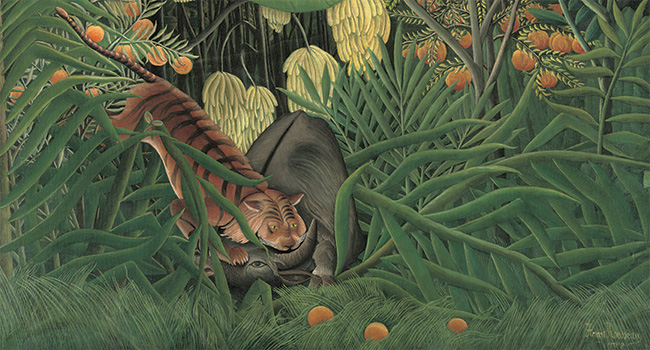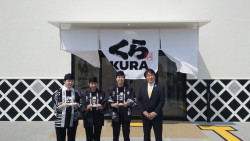
February 17, 2014
Admired from Afar
Cleveland’s quaint collection of Japanese art at the Tokyo National
By Metropolis
Originally published on metropolis.co.jp on February 2014


The Cleveland Museum of Art is one of those typical old American museums, founded a long time ago by a bunch of wealthy industrialists, housed in a neo-classical temple-like building and then gradually adapted for the needs of the present day. It could be from a dozen different cities, but it just happens to be from Cleveland, and it just happens to have an interesting—if not overwhelmingly brilliant—collection of Japanese art.
This is the basis for the exhibition at the Tokyo National Museum, “Admired from Afar: Masterworks of Japanese Paintings from the Cleveland Museum of Art,” effectively a quick visit back home for an eclectic range of Japanese artworks, bulked out with a few works that don’t quite fit within the exhibition’s title.
These include some Chinese ink paintings as well as some French paintings, most notably the naive painter Henri Rousseau’s large colorful canvas Fight Between a Tiger and a Buffalo (1908).
Given the title of the show, you might well wonder what these are doing here. A case could be made for including the Chinese works because Japanese art long looked to China for inspiration, especially the artists of the Kano school, like Kano Shoei and Kano Mitsunobu, who painted Birds, Trees, and Flowers (16th century) a serene pair of screens enlivened by the odd detail of a hawk crushing the life out of a pheasant.
A similar but much weaker case could be made for the French works, especially Rousseau’s Fight Between a Tiger and a Buffalo, in which we can detect some influence of the Orient.
However, a cynic would say that these non-Japanese works have been added to the exhibition because the Japanese works aren’t quite good enough to make a show worthy of this venue. There is some truth in this, as big names are rare—a painting of birds and flowers is “attributed” to Sesshu Toyo—and many of the works are by anonymous painters.
I couldn’t help getting a sense that this is a collection that had been thrown together by people who didn’t quite understand Japanese art but had certain preconceived notions of Japanese quaintness. This is certainly reflected in some of the choices, like Yamamoto Baiitsu’s handscroll painting The Shadow Dancers (19th century) and Ants Hauling a Pumpkin (15th century), a hanging scroll by Motsurin Joto.
But while this may be a weakness of the collection from a serious artistic viewpoint, it is a strength in terms of providing artworks that are oddly interesting and have something of a story, such as Watanabe Kazan’s almost life-sized Portrait of Ozora Buzaemon (1827), a freakishly tall sumo wrestler whose height measured 227 centimeters (Akebono was only 203 centimeters!).
Even more fascinating than this, however, is the story behind Kawanabe Kyosai’s brightly colored The Courtesan Jigoku (“Hell”) Before a Screen” (19th century). This hanging scroll shows a prostitute who thought that her career was a punishment for evils done in a previous life, and so wore kimonos covered with images from hell and enacted her professional duties with a sense of surrender and penance.
Tokyo National Museum, until Feb 23.







